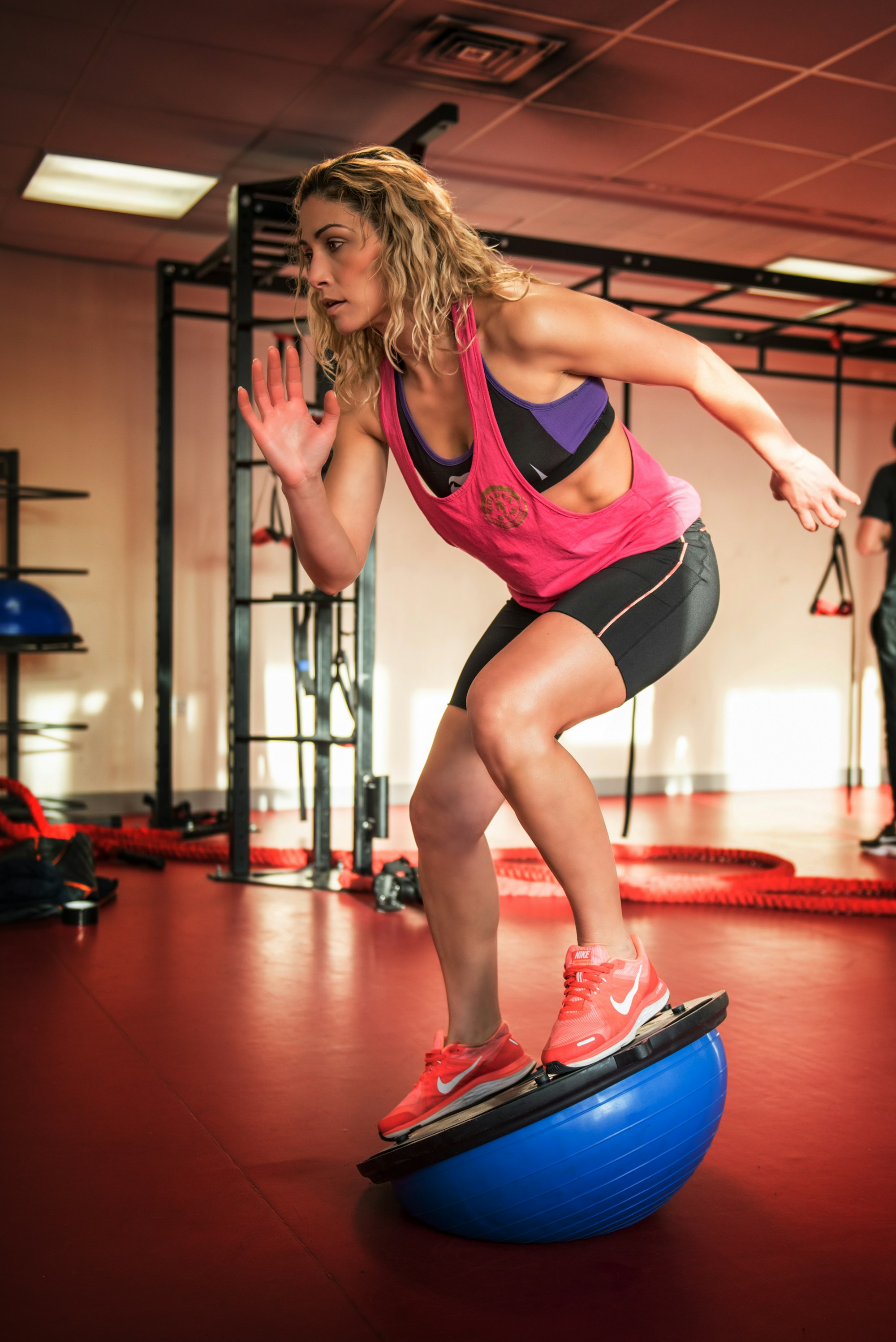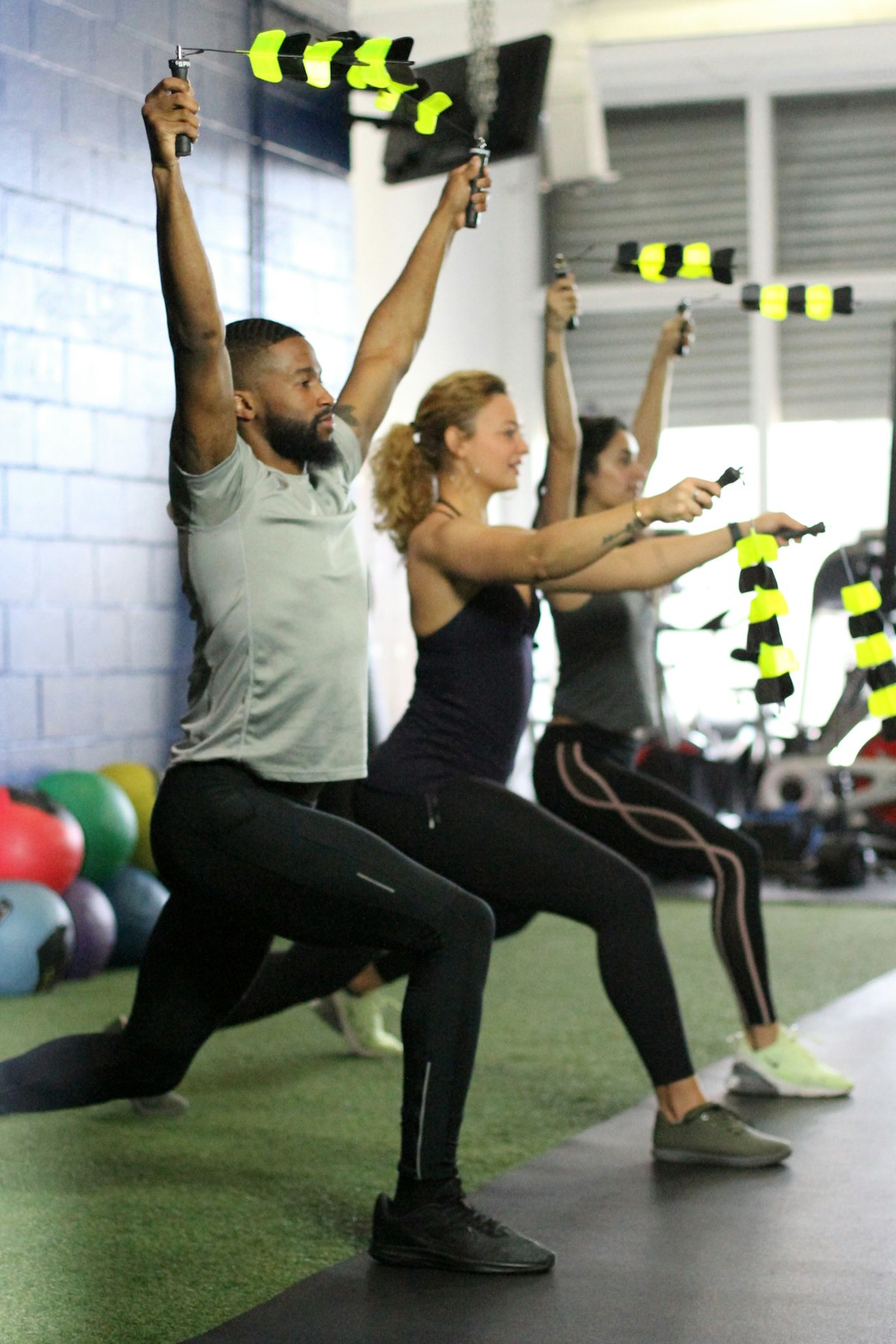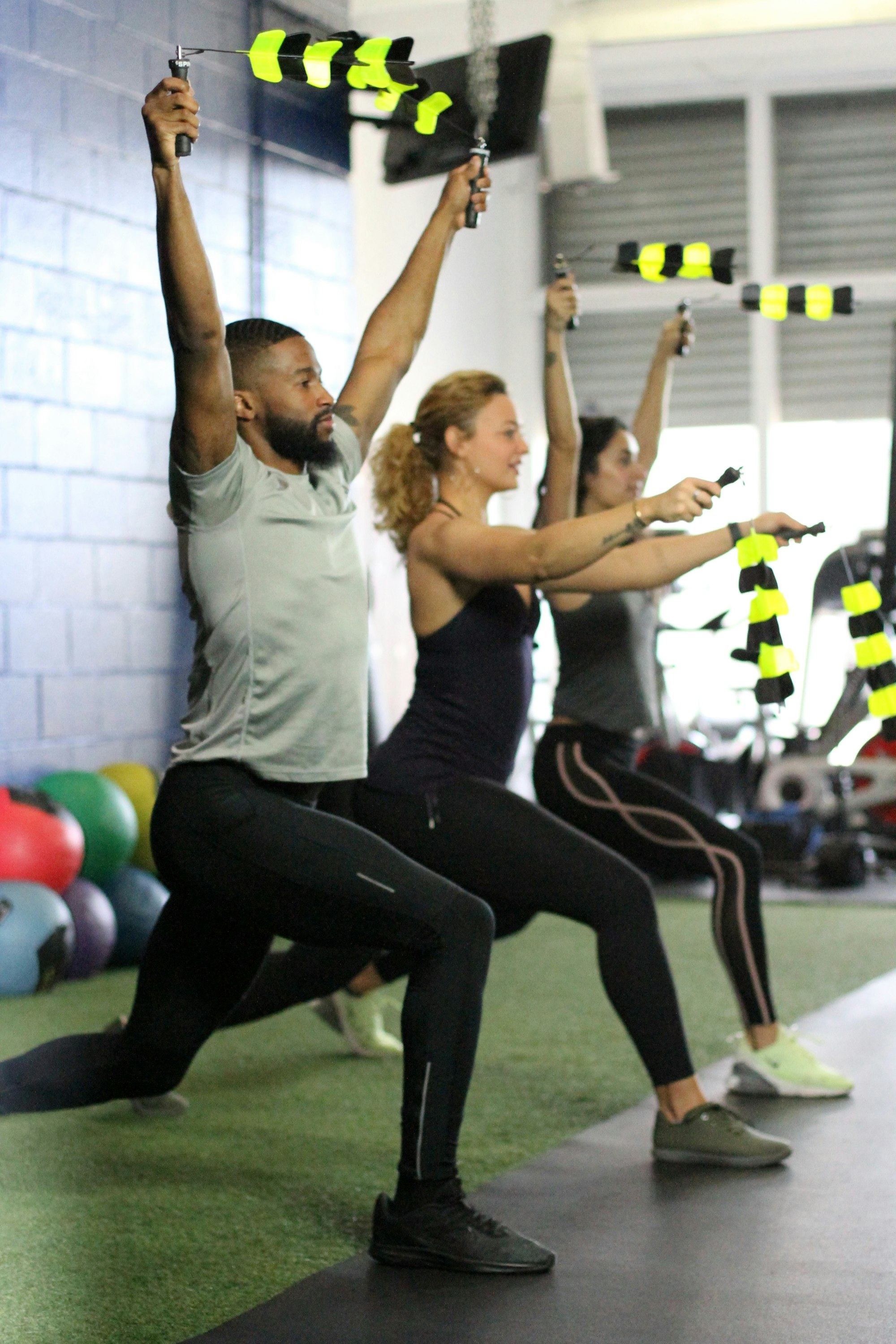Content Summary
Everyone knows that exercise is good for you, but sometimes it can be hard to motivate yourself to get up and moving. However, the benefits of exercise are becoming increasingly clear, and they are definitely worth the effort!
Exercise can improve cardiovascular fitness and muscular endurance, which translates into an increase in energy. It can dramatically reduce the risk of coronary artery disease. It may also help lower high blood pressure and elevated cholesterol levels, and aid in weight control. It can help delay or prevent the onset of osteoporosis. And it appears to give self-esteem a measurable boost, and in general to improve your sense of well-being.
A lack of exercise by contrast, is now recognized as a health risk by the American Heart Association, which cited sedentary behavior as one of the important risk factors for cardiovascular disease. And too many Americans have put themselves at risk. As many as 12 percent of all deaths from coronary heart disease could be prevented each year if people would just get up and move more! That’s a pretty compelling reason to lace up your sneakers and hit the gym!
The good news is that you don’t have to train for a marathon to reap the benefits of exercise. Something as simple as a 30-minute brisk walk every day can make a big difference in your health. And there are plenty of other activities you can do that are enjoyable and good for you too, such as swimming, biking, hiking, clinging weigh etc.

What is Fitness and Staying Fit Means?
Most people know that exercising to stay fit is important, but what does "being fit" really mean? Physical fitness, as experts in the field have long stressed, actually has the following components: cardiorespiratory endurance, muscular fitness (strength and endurance), flexibility, and body composition.
Cardiorespiratory Endurance: Cardiorespiratory endurance is reflected in the sustained ability of the heart and blood vessels to carry oxygen to your body's cells. This is the aspect of fitness that provides the most impressive health benefits, so it's no wonder that aerobic exercise has been given the most emphasis over the years. However, even if you're in excellent shape aerobically, you may still lose muscle mass and flexibility if you don't supplement your aerobic workouts with strength-training and stretching exercises.
Muscular fitness: consists of both strength and endurance. Strength is the amount of force a muscle can generate, while endurance is the muscle's ability to sustain repeated contractions or to resist fatigue. Strength-training exercises help to build muscle mass, while endurance-training exercises help to increase muscle stamina. Both types of exercise are important for overall muscular fitness.
Flexibility: Flexibility is a measure of the range of motion around a joint. For example, if you can touch your toes without bending your knees, you have good hamstring flexibility. Stretching exercises help to increase flexibility by lengthening the muscles and improving range of motion around joints.
Body Composition: Body composition refers to the ratio of fat to lean tissue (muscle, bone, organs, etc.) in the body. A higher proportion of lean tissue is generally associated with better health because it signifies a lower risk for obesity-related diseases such as type 2 diabetes and heart disease.
Having an ideal body composition isn't just about looking good—it's about being healthy on the inside too!
How Much Exercise is Enough?
Numerous studies have shown that exercise helps lower the risk of many major diseases as well as premature death. Two more large exercise studies were recently published in consecutive issues of the Journal of the American Medical Association, though they offered somewhat conflicting results.
In the first study, from the Cooper Institute for Aerobics Research in Dallas, researchers looked at nearly 10,000 men (ages 20 to 82), 3,000 of whom had a history of heart disease, stroke, cancer, high blood pressure, or diabetes. They were given a physical and treadmill test and questioned about their health habits and then reexamined an average of seven years later.
The second study, from Harvard University, followed more than 17,000 male physicians for 14 years. Every two years, they were asked about their medical history and lifestyle habits and given a physical exam.

Both studies found that those who exercised regularly had a significantly lower risk of death from all causes than those who didn’t exercise. However, the Cooper Institute study found that the benefits of exercise were most pronounced in those with a history of heart disease or stroke, while the Harvard study found that even moderate amounts of exercise lowered the risk of death from all causes.
So how much exercise is enough? The answer may depend on your individual health history and fitness goals. However, both studies suggest that even moderate amounts of exercise can have significant health benefits. If you’re not sure where to start, talk to your doctor or a certified personal trainer who can help you create an appropriate exercise plan.
The American Heart Association recommends at least 150 minutes of moderate-intensity aerobic activity (such as brisk walking) or 75 minutes of vigorous-intensity aerobic activity (such as running) per week. They also recommend strength training at least twice a week.
The U.S. Department of Health and Human Services has slightly different recommendations, suggesting that adults should aim for at least 150 minutes of moderate-intensity aerobic activity or 75 minutes of vigorous-intensity aerobic activity per week, plus strength training 2-3 times per week.
Basic recommendation. For the great majority of Americans, who get virtually no exercise, any activity is certainly better than none. If you're basically sedentary and feel you can't face a program of vigorous exercise, then include at least 30 minutes of some enjoyable and/or useful activity in each day. As long as calories are expended, almost any activity will do-even bowling, golf, dancing, or active house work offers some health benefits to people who have been sedentary. It's the first step toward a longer, healthier life.

The Benefits of Aerobic Exercise and Keep a Healthy Heart
Most people know that aerobic exercise is good for their heart and lungs, but did you know that it comes with a host of other benefits as well?
Aerobic exercise, which is any activity that utilizes oxygen for energy production for long periods of time, helps to build cardiovascular fitness and can be performed at any age. In addition to promoting cardiovascular health, aerobic exercise also helps to make muscles stronger and more flexible.
There are many different types of aerobic exercises to choose from, including brisk walking, distance running, swimming, cycling, aerobic movement classes, cross-country skiing, rowing, and jumping rope. If exercising outdoors is not convenient, there are also many machines that allow you to perform most outdoor activities indoors.

In addition to the well-known benefits of aerobic exercise mentioned above, research has shown that regular aerobic exercise can also: Lower blood pressure, Improve cholesterol levels, Reduce the risk of heart disease, stroke, and type 2 diabetes, Strengthen bones and joints, Improve mental health and mood, Boost energy levels, Help manage weight, and Promote better sleep.
As you can see, there are many good reasons to make aerobic exercise a part of your regular routine. Aerobic exercise has something to offer everyone, regardless of age or fitness level. So get out there and start reaping the many benefits of aerobic exercise today!
How Much Exercise is Enough to Stay Healthy?
The American College of Sports Medicine has made the following recommendations concerning three key factors-frequency; duration, and intensity in an aerobic exercise program.
How often, and how long? If you are below average in cardiovascular fitness, you should aim at three exercise sessions per week, for 20 minutes per session, preferably on alternate days. After six to eight weeks, if you wish to continue improving your cardiovascular fitness you can increase the frequency and duration of your sessions. This is also necessary if you want to burn body fat.
How hard should I exercise? To achieve an aerobic training effect, the American College of Sports Medicine suggests that you exercise at a level of intensity called your target heart rate.
The easiest way to calculate this rate is to subtract your age from 220 a person's theoretical maximum heartrate-then take 60 percent and 90 percent of that number (multiply the number by 0,6 and by 0.9). The results are the upper and lower end of your target heart-rate zone.
While you exercise, your heart rate per minute should fall somewhere between these two numbers: for example, a 40-year-old has a target heart rate of 108 to 162 beats per minute. (If you take medication for your heart or blood pressure, your target heart rate may be lower than determined by this calculation.)

A schedule of low to moderate intensity exercise is best for most people, especially those who aren't in peak condition. If one of the factors in your exercise program is low, compensate by increasing the others. For example, if you exercise only for short periods, increase the frequency of the activity-five times a week instead of three. Or increase the intensity of the exercise (but only do this gradually).

FOR MUSCLE ENDURANCE & STRENGTH TRAINING
Developing strong muscles is important for everyone, not just for athletes and bodybuilders. Well-conditioned muscles and joints help you perform better physically, assist you in maintaining good posture, and may help prevent injuries and chronic lower back pain.
Recently, more and more fitness experts have been recommending strength training for health reasons. Maintaining muscle strength can provide obvious daily benefits-for example, when lifting grocery bags, gardening, or shoveling snow can increase your stamina and self-confidence.

Many musculoskeletal injuries, especially those related to exercise (such as runner's knee or shin splints), are caused in part by muscle weakness and imbalances as well as joint instability, which may be corrected by strength training.
Lower backpain often results from weak back muscles as well as weak abdominal muscles. Poor posture, which strength training may help improve, can also contribute to back problems. Despite the stereotype of a weight lifter muscle bound, weight training can be used by everyone, not just those interested in becoming body builders.
Paired with regular aerobic exercise, weight training increases your strength and muscle endurance as well as your overall feeling of fitness in ways that no other single exercise can. Bicycling develops one set of muscles, basketball another, but weight training works out a whole range of muscles in a short amount of time.

Specific weight-training routines can also be used to help you develop particular muscle groups that will improve your performance in a chosen sport. True enough, nothing improves your tennis game as much as playing tennis:
Specificity is the iron rule of modern sports training. Nonetheless, upper body training will give you an extra edge in tennis or throwing activities, just as strengthening your legs will help you run faster and longer.
The basic principle of any sort of muscle development is that of overload: contracting a muscle group against added resistance. The way a muscle grows-at least according to some research is by splitting longitudinally under the strain placed on it, then "healing" after the work-out by adding protein.
In weight training, the overload placed on the muscles is increased a step at a time (the technique is called progressive resistance), compelling the muscles to continue developing, thereby becoming stronger.
Three ways to train muscles:
There are three modes of exercise for overloading muscles: 150-metric, isotonic, and isokinetic.
In isometric exercises, you contract a muscle group without moving the joint to which the muscles are attached for instance, pushing steadily against an immovable wall. These exercises build muscle but the gain occurs mainly at the angle at which the muscle is exercised.
Isotonic exercises, by contrast, contract a muscle through a range of motion as you can do with movable weights. The virtue of isotonic exercises is that they build muscle through this full range of movement, unlike the limited buildup of iso-metric exercises.
Isotonic exercises use both free weights and machines. Free weights are barbells (long bars with adjustable weights at each end) and dumbbells (shortened barbells, ordinarily used in pairs, one in each hand).
Isokinetic exercises, also consist of contracting a muscle through a range of movement. But isokinetic exercises, which are performed on machines, use equipment designed to apply maximum stress to the muscles through the whole range of movement.
The advantage of free weights is that they allow movement in any direction and so lend themselves to an enormous variety of exercise routines; they are also relatively inexpensive. Their disadvantage is that they don't isolate muscles as clearly as machines do, and the stress they provide is not nearly as uniform over the full range of motion as that provided by some machines.
Weight-training tips. A typical workout with weights includes a warm-up of 5 to 10 minutes followed by an exercise routine that leaves the muscles thoroughly exhausted. It will consist of about a dozen exercises six for the upper body, six for the lower body. Above all, it will be scheduled so that you give each muscle a full day's rest before you exercise again.
Conclusion
Each of these four components—cardiorespiratory endurance, muscular fitness, flexibility, and body composition—is important for overall physical fitness. However, you don't need to be an elite athlete in all four categories to enjoy good health; even moderate levels of activity can provide significant health benefits.
So get out there and start moving!
Your body will thank you for it!









